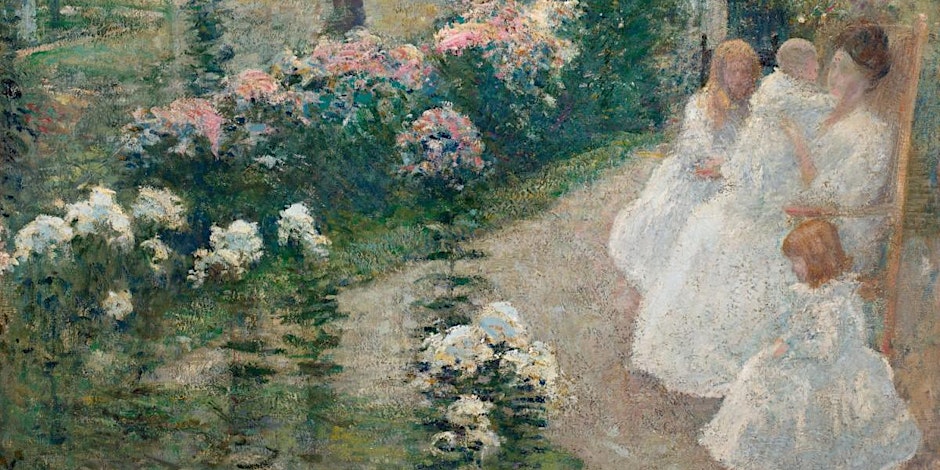Wednesday, March 26, 2:00 pm – 3:30 pm Eastern – Artists’ Gardens: Gardens of the North American Impressionists
Plants and gardens have long served as a creative inspiration for artists. They are places of color, structure and changing light, representations of memories and emotions, expressions of the cycle of life and the passing of time. When the garden is one created by the artist themself, the scope for exploration and engagement intensifies and, whether garden-lover or art-lover, we are drawn in to their stories and meanings. In this four-part series, The Gardens Trust will explore a range of gardens created and celebrated by their artist owners. Attendees will be sent a Zoom link 2 days prior to the start of the talk, and again a few hours before the talk. A link to the recorded session (available for 2 weeks) will be sent shortly afterwards. Register through Eventbrite HERE.
North American Impressionists were inspired by what was happening in European art. In 1872 American artist William Merritt Chase told the New York Times ‘My God, I would rather go to Europe than go to Heaven!’ Philadelphia’s 1876 World’s Fair Centennial International Exhibition inspired the quest for ‘olden tyme’ plants and poetry, fulfilled by Childe Hassam’s muse, the poet Celia Thaxter on Appledore Island. Parallels can be drawn between Monet at Giverny and the gardens created by John Henry Twachtman at Greenwich, Connecticut and the Cos Cob and Old Lyme Art Colonies in the same state. In 1893 Chicago hosted the World’s Columbian Exposition which featured the mural Primitive Woman by Mary Fairchild MacMonnies facing Modern Woman by Mary Cassatt. Gardens and children were ingeniously combined by Cassatt and Canadian Impressionist Helen MacNicoll. Tired of narrow artistic traditions at home, three generations of American artists including Frederick Frieseke travelled to Monet’s Giverny to live, or lodge at the Hotel Baudy.
Caroline Holmes is a University of Cambridge ICE Academic Tutor and Course Director; has lectured in the UK, Australia, New Zealand, USA, Europe and Japan as well as for cruises crossing the Baltic, Caribbean, Mediterranean and Red Seas, and the Atlantic and Indian Oceans. Author of 12 books including Monet at Giverny, Water Lilies and Bory Latour-Marliac, the genius behind Monet’s water lilies; and Impressionists in their Gardens, she is a consultant designer specialising in evoking historic, artistic and symbolic references, and contributes to Viking TV. Her website is https://horti-history.com. Image: detail, On the Terrace by John Henry Twatchman (c.1890-1900), Smithsonian American Art Museum, public domain







